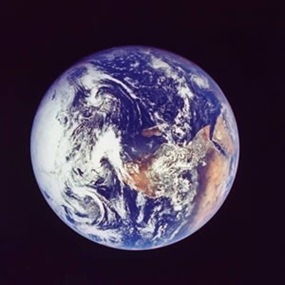After viewing the interview on PMTV with the American astronaut Michael Lopez-Alegria it reminded me of our photographic exploits in space. Michael has had four space missions to the International Space Station (ISS), 10 space walks and the second longest stay in space, being over six months. We (as humans) have certainly experienced the closer parts of our galaxy, even if we haven’t found any aliens!
However, it is probably also time to think about how they managed to capture some of those spectacular photographic images we have seen over the years. And space photographs are certainly spectacular.

So how did they capture the images? Well, they took cameras up into space, much the same as we take them on family picnics. The concept was to record what life was like for our early space travelers and in fact some of these images were artistically so good that the pictures became a photography exhibition that toured the world in 1984.
The cameras they used were specially built Hasselblads, but unfortunately, they left quite a few of these cameras on the moon’s surface – so if you’re looking for a cheap Hasselblad it’s there for the asking. The trip to collect it could be a little expensive however, but if we’d thought about it we could have asked Michael Lopez-Alegria to bring us one back. Would have been duty free too! And now you can ask the Chinese if their Jade Rabbit moon rover can bring you one back, if it finds one.
A little bit about Hasselblads – legendary cameras that were used by most professional photographers the world over. The moon cameras had titanium bodies as well! (Titanium is the second most expensive metal after Unobtanium.) I had two Hasselblad ELM’s and a 500 CM for back-up when he was heavily involved in commercial photography. And it was ELM’s the spacewalkers left behind. Weep!
Those cameras are notable in the fact that the back is removable and holds the film inside it. You can shoot one roll and just clip on another back and keep on shooting. You can also rip off a shot on color film and then take the same picture with a different back loaded with Black & White for example.
The lenses are among some of the very best in the world. Great big hunks of optically perfect glass, which can cost well over B. 500,000 in some cases.
Hasselblads are no “point and shoot” cameras, but very serious instruments to record life on earth (and in outer space) forever.
Interestingly, professional photographers are not in the habit of running “automatic” cameras, and some of the Hasselblads are totally “manual” cameras. In this way you can set any of the parameters of shutter speed or aperture size independently.
Another very different aspect of Hasselblad photography is the size of the negatives. Instead of the usual small rectangular 35 mm negatives that we have come to accept as “normal”, Hasselblads produce a square negative 6cm by 6 cm. The advantage here is when making enlargements. You can blow up a 6 x 6 negative to the size of the side of a house before you lose sharpness. That’s more than you can do with 35 mm ones! A lot of advertising agencies would only accept the larger negative format for commercial photography for that reason.
But back to the moon. If you can ever get hold of one, try and grab a copy of the book called “Sightseeing A Space Panorama” with the ISBN number 0-394-54243-6. Published in 1985, it has 84 of the most stunning space photographs you will ever see. Shots of life in space for the astronauts, views of our world as the space shuttle passed many miles above us, views of the moon. All of them pin-sharp pictorial documents of our exploration of space. The final shots should, in my opinion, be made compulsory study for all of our children and our children’s children. They record the milestones we, as a species of life, passed on our way to hereafter. And what’s more they did it on Kodak film and Hasselblad cameras! A triumph for film photography.




